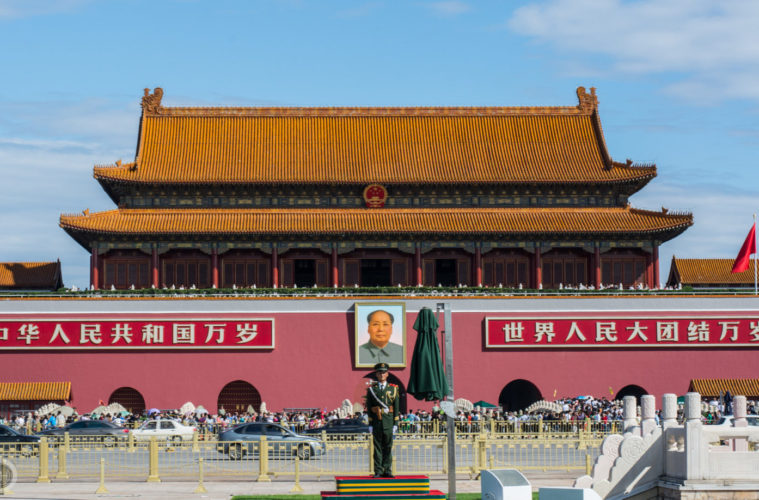A new report by Arcview Group and Asia Horizon expects the Chinese CBD market to explode in popularity. Report findings suggest that China will become the world’s largest CBD market as broad acceptance of the non-psychoactive cannabinoid continues to entice the major buying power of 1.4 billion consumers.
Investors, the industry, and the wider media always keep an eye on Arcview Group’s numbers on just how fast the cannabis snowball is actually rolling down the hill. In their new collaboration with Asia Horizon, the group has released a very thorough report detailing how much investment opportunity China’s hemp and CBD market is showing. It looks like there will be some big winners in the years to come.
The report’s authors point to the fact that China leads global spending across multiple consumer product categories as an indication of their impending takeover. This includes every sector impacted by CBD in any way – from pharmaceuticals to tobacco.
“The combination of seismic demographic shifts and rapid expansion in discretionary incomes contributes to forecasts calling for CBD demand to rise significantly in China’s domestic market, echoing CBD’s rapid growth in the West,” the report noted
The report determined China’s pace of change as being another factor. The Chinese government began to take a forward-thinking approach in creating regulations to encourage domestic production of higher-value, non-psychoactive cannabinoids from industrial hemp as it watched the CBD wave take over the west. The report’s expectations are essentially a result of progress that started in the middle of the decade.
“There is an increasing domestic demand in China for CBD products,” shared David Abernathy, VP of Research and Consulting at The Arcview Group. “Ultimately many products across health and beauty categories will be infused with CBD. Those who enter China’s market early are likely to be well positioned to take advantage of the rapid growth of global CBD and other cannabinoid markets by developing the necessary infrastructure to allow rapid and cost-effective scaling.”
Arcview Group and Asia Horizon believe that as the government continues to show support for production, the resulting hemp-derived cannabinoids will increasingly be viewed like any other Active Pharmaceutical Ingredient (“API”) – a space the nation already dominates internationally.
“The fundamental drivers of China’s leadership in global API production will likely extend to cannabinoids,” the report states, “as regulations are clarified in destination markets in North America and Europe, multinational pharmaceutical and nutraceutical companies that already source a broad range of APIs from China will similarly source cannabinoid-based APIs from China. With newfound government support for its hemp-derived cannabinoid industry, one of the lowest cannabinoid production costs globally, and unrivaled large-scale manufacturing infrastructure and expertise, China is set to become a leading supplier of cannabinoids for the global supply chain.”
While the report goes into potential, it makes it clear that China is already the leader in hemp-based textiles, animal feed, and a bunch of other things Jack Herer was right about on Venice Beach. It may seem weird to use words like “in development” to talk about something already as large as the Chinese industrial hemp industry, but the new potential of CBD in its domestic market is just so massive.
It will be curious to see how much more dynamic the processing of the actual hemp biomass will get. In particular, hemp that you could process for the cannabinoids and then still use the leftover waste material after extraction for other textile purposes. One of L.A.’s big distillate factories told me in March – just before lockdown – they had seen some people attempting to work with hemp biomass waste products. It’s a safe bet with the magnitude of material left over in China, someone is going to figure out how to make a buck with it.
“2020 is widely considered to be ‘year one’ of the commercial cannabinoid industry in China,” said Brian Sheng, Founder & Chief Executive Officer of Asia Horizon. “As the second-largest economy in the world, China represents a transformative opportunity for the global hemp industry. While early in its development, the Chinese industry is accelerating as it learns from developments in the North American market and beyond. Many Chinese public companies are strategizing for early entry as global regulations are increasingly clarified.”
While it’s hard to get an exact count on how many companies are now working in the cannabinoid space in China as a whole, the report’s authors were able to find 15 entities across the county that have received government authorization to extract cannabinoids from hemp.
“Most are based in Yunnan province, which began issuing licenses in 2010, with a few in Heilongjiang province, which began regulating in 2018,” the report noted.
Even prior to those extraction labs coming to Heilongjiang, things were already popping off in the Mongolian border region that produces a big chunk of the nation’s hemp. The South China Morning Post spoke with a farmer from the region who was producing 600 hectares of hemp a year, which works to just under 1500 acres. Going by the Sacramento Bee’s numbers from last year, the entire legal California cannabis industry makes up 77% of this farm at 1142 acres.
That was all a year before the authorities really got on board, but the report said we can expect the total number of authorized participants to increase slowly over the next two years, with state-owned or large tobacco and pharmaceutical companies starting to dip their toes in the industry.
Advertising disclosure: We may receive compensation for some of the links in our stories. Thank you for supporting LA Weekly and our advertisers.

